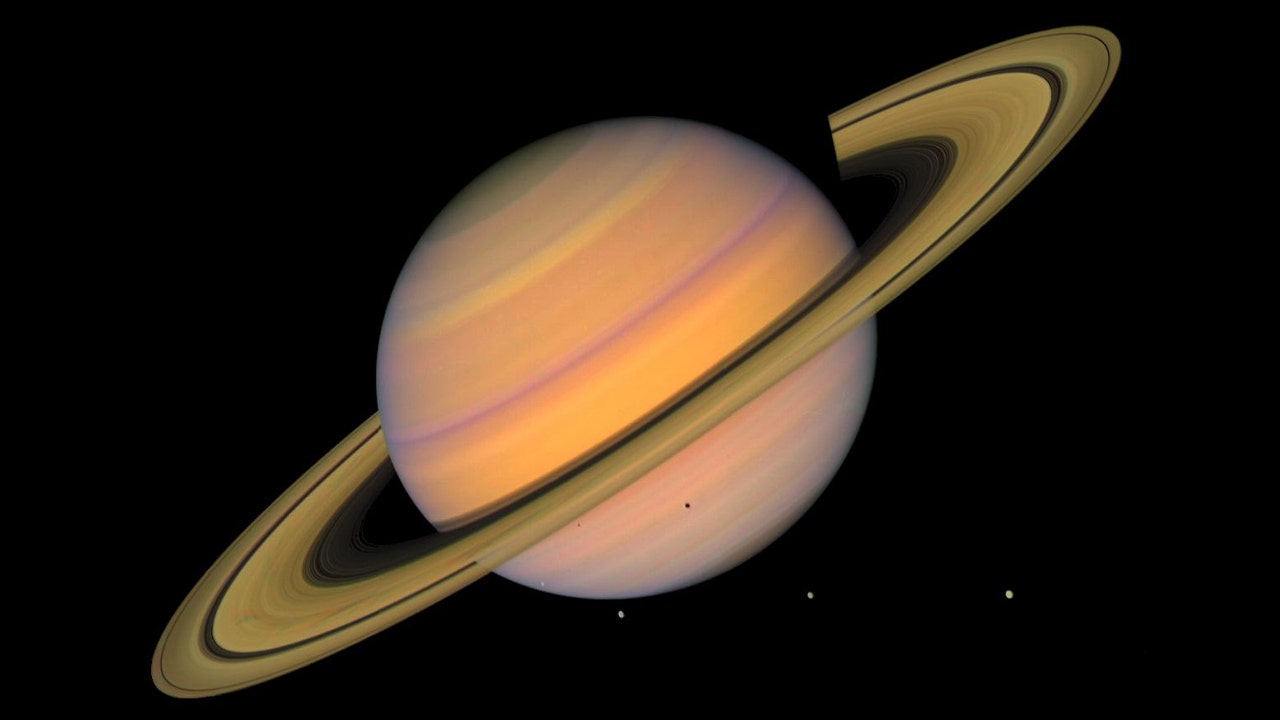Saturn's Stellar Triumph: Surpassing Jupiter with a Celestial Bounty.
In a celestial revelation that has left astronomers awe-struck, the ringed planet Saturn has emerged triumphant in a cosmic rivalry, surpassing Jupiter to claim the title of the "moon king" of our solar system. Led by a team of brilliant space scientists from the University of British Columbia, a momentous discovery has unveiled an astounding 62 new moons encircling Saturn, catapulting its moon count to an astonishing 145. This remarkable feat not only places Saturn in a league of its own but also crowns it as the first planet to boast a celestial entourage exceeding 100 members.
Previously, Saturn was content reigning as the planet with the most moons, until February of this year when Jupiter unveiled 12 newfound lunar companions, elevating its total count to 95. However, with this groundbreaking revelation, Saturn has stolen Jupiter's celestial thunder and ascended to unprecedented lunar glory. Professor Brett Gladman, an esteemed astronomer from the University of British Columbia, joyfully exclaimed, "Saturn not only has nearly doubled its number of moons, it now possesses more moons than all the rest of the planets in the solar system combined."
To preserve the tradition for Saturn's moons, these captivating celestial entities will soon be bestowed with names inspired by Gallic, Norse, and Canadian Inuit gods. A poetic nod to the mystical and divine nature of the cosmos, ensuring each moon receives its rightful place in the annals of astronomical history.
Amongst this celestial ballet, many of the newly discovered moons are remnants of planetary collisions, their shapes irregular and evocative of the cosmic forces at play. While scientists cautiously anticipate that Jupiter may temporarily inch ahead in the moon race, the undisputed fact remains: Saturn's lunar dominion reigns supreme. Mr. Gladman confidently remarked, "At a fixed size, there are three times more Saturn satellites than Jupiter satellites. They're not all known yet, but we already know the final answer."
Before this awe-inspiring revelation, Saturn boasted a respectable count of 83 moons officially recognized by the International Astronomical Union (IAU). However, with the team's pioneering techniques, a brilliant method called "shift and stack" employed using the Canada-France-Hawaii Telescope (CFHT) atop Maunakea in Hawaii, a dazzling tapestry of previously unseen moons emerged. By skillfully shifting a series of images at the same velocity as a moon's movement, the faint celestial bodies were unveiled in their ethereal splendor within the resultant "stacked image."
As we gaze upon Saturn, adorned with its newfound lunar glory, we are reminded of the boundless wonders that our universe holds. A testament to the ceaseless pursuit of knowledge by dedicated scientists and the majesty of the cosmos itself, Saturn's celestial triumph serves as a beacon of inspiration for all who seek to unravel the mysteries of our vast universe.



0 Comments